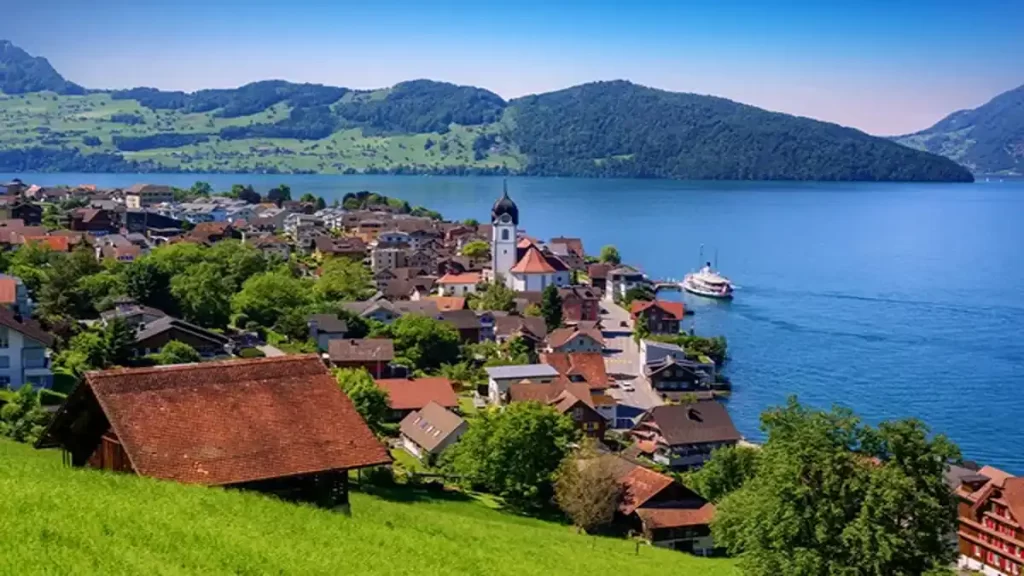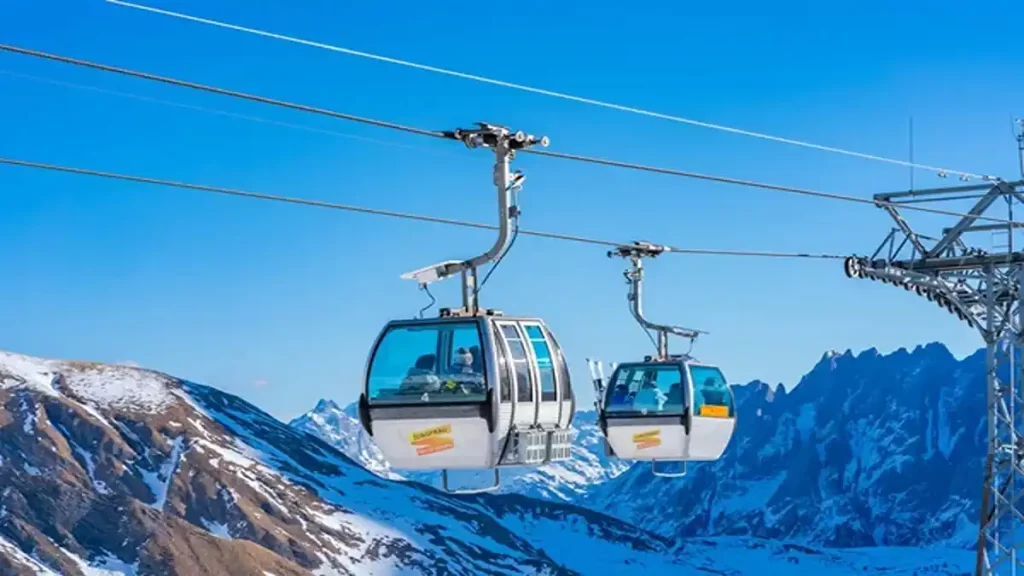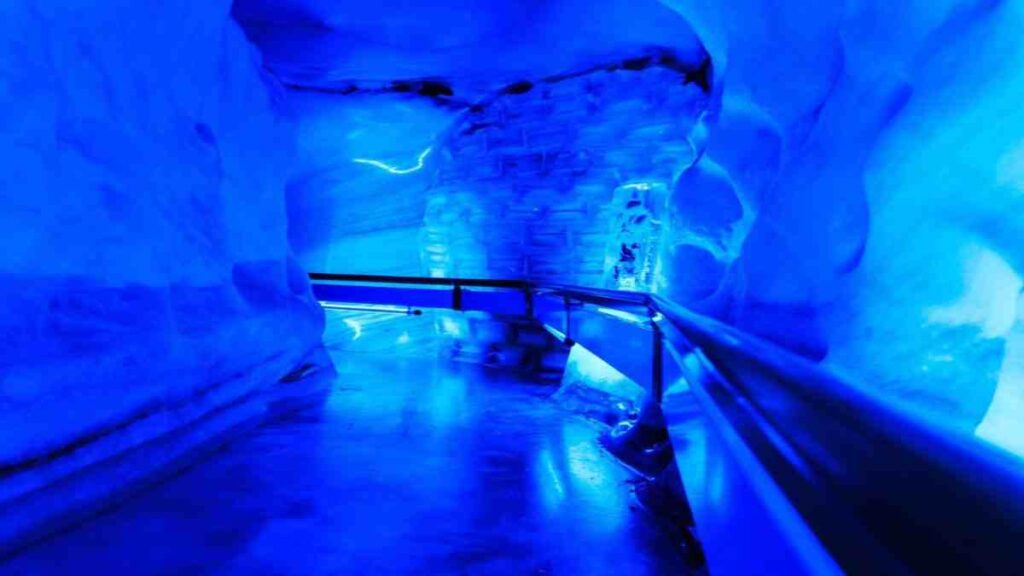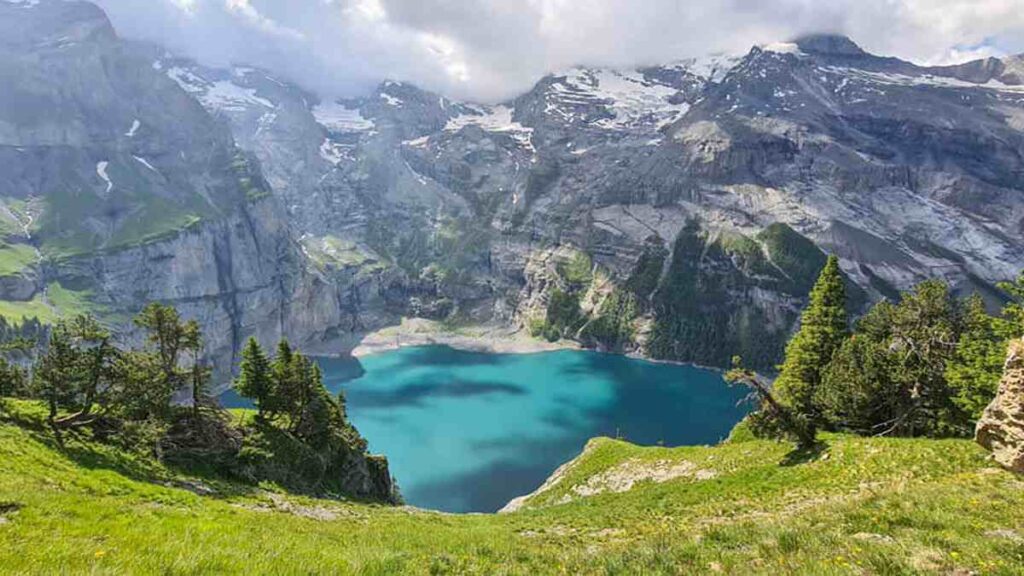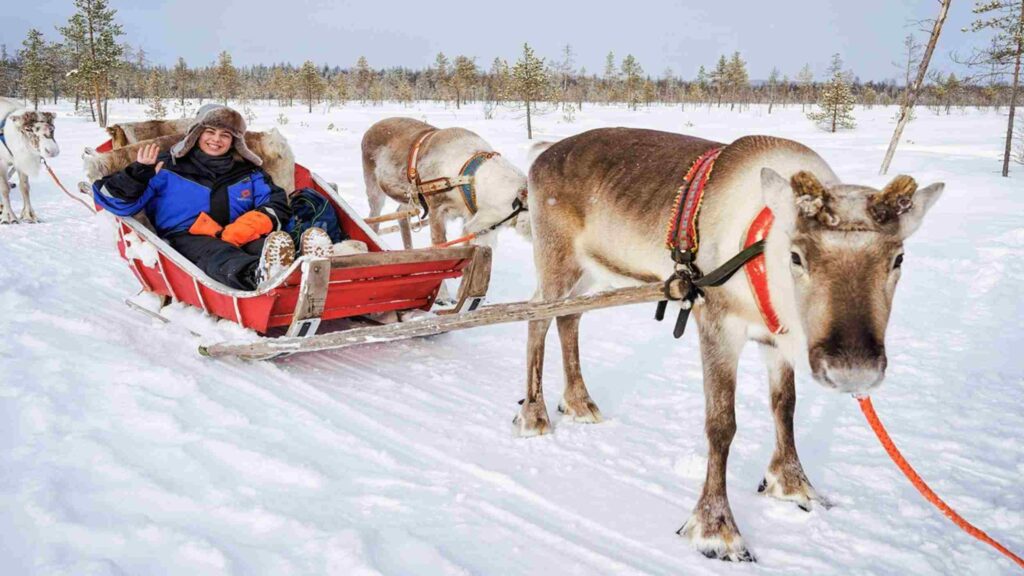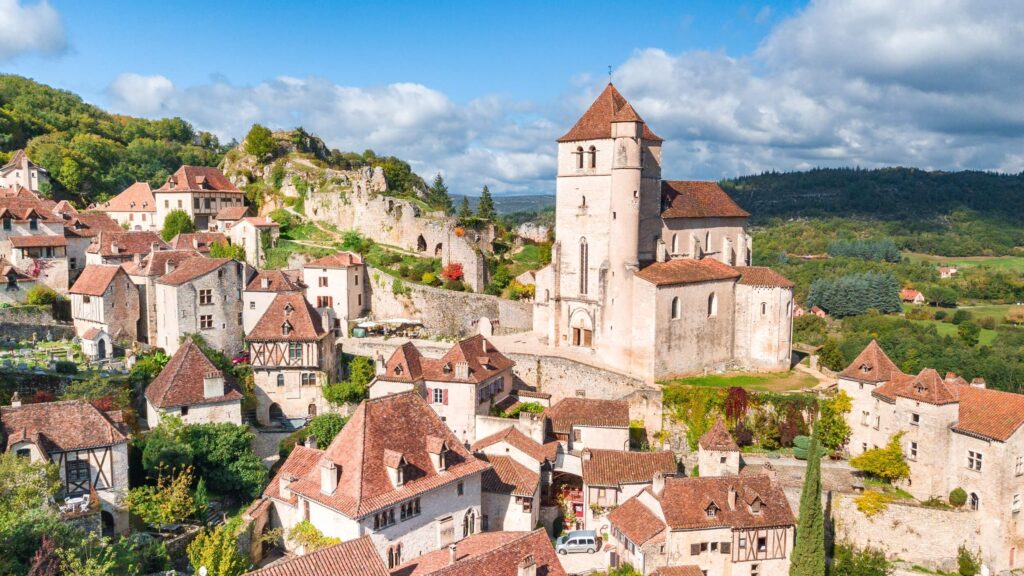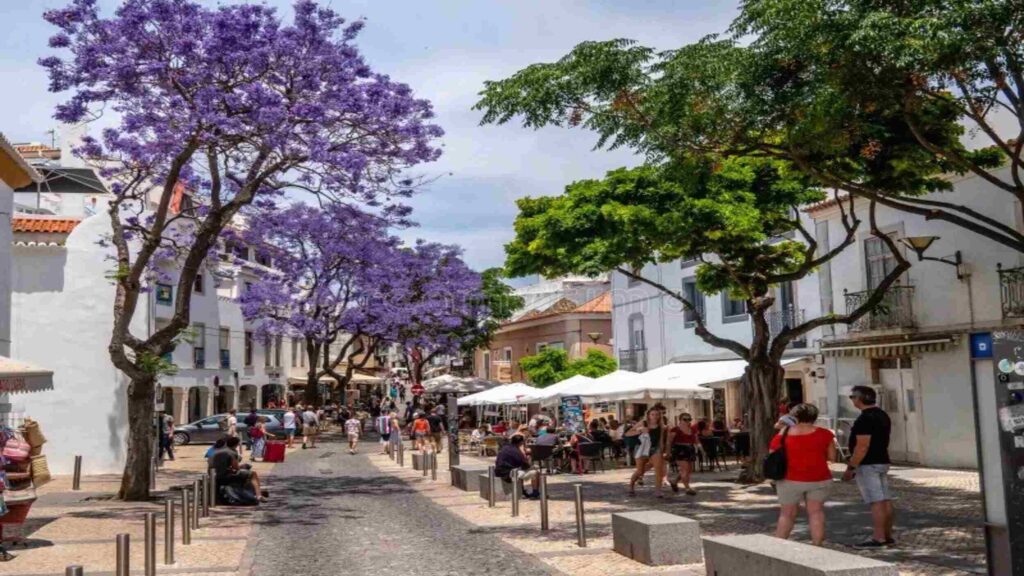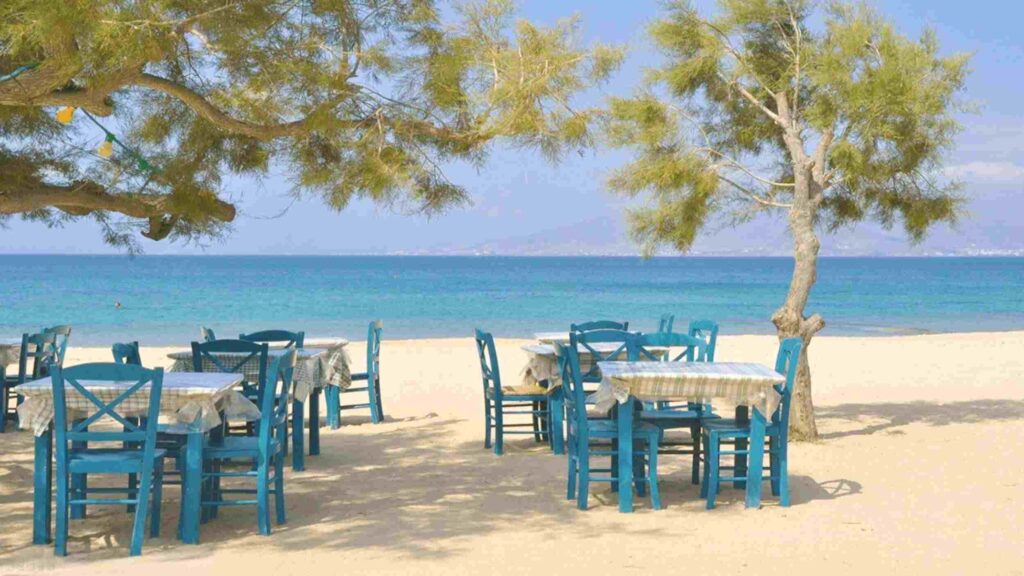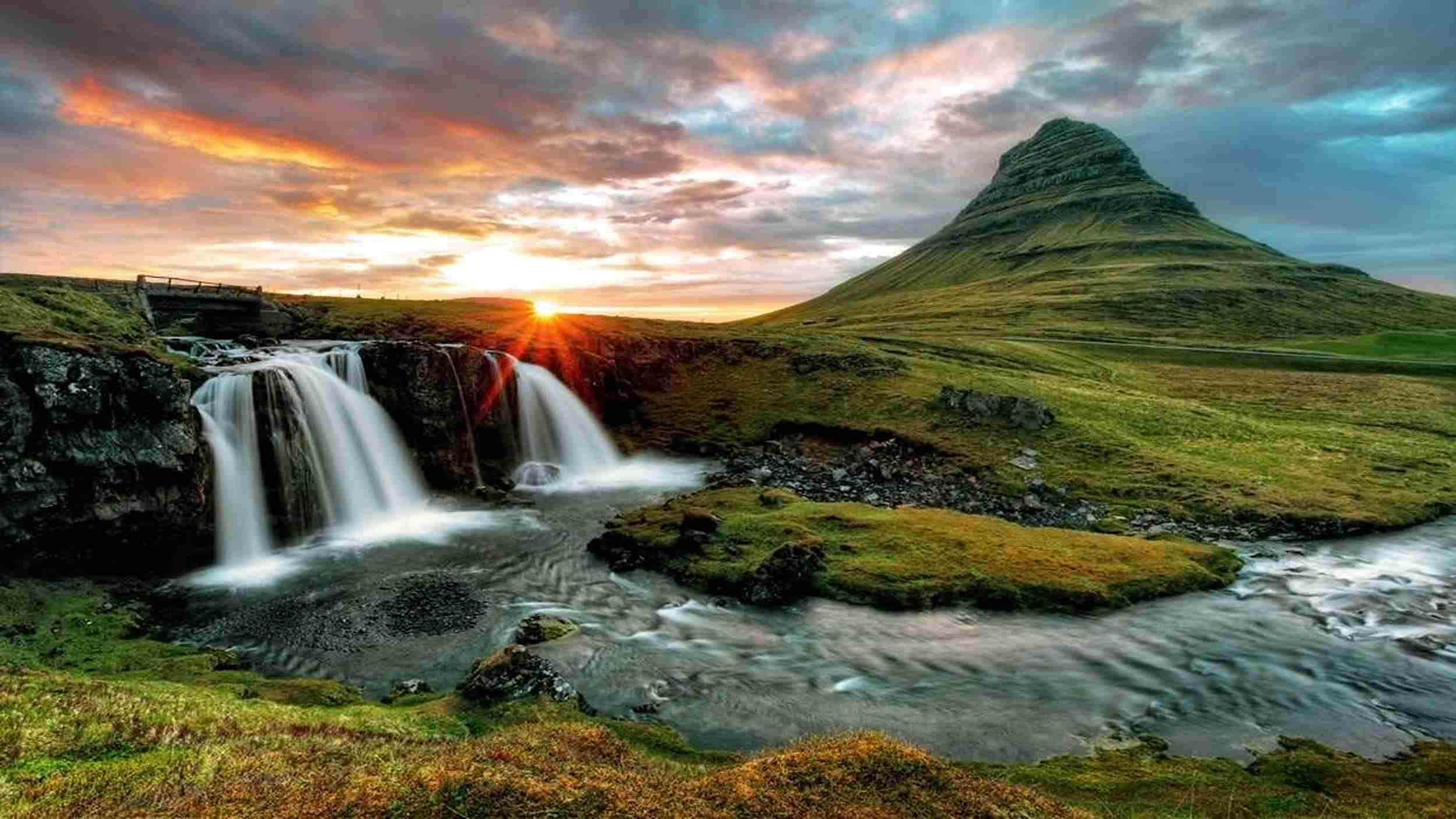
You’ll find Iceland’s wildest landscapes in the Western fjords of Iceland, a place most tourists never discover. This remote corner sticks out into the Denmark Strait, where sheep outnumber people 20 to 1. Whilst millions visit Iceland’s main tourist spots each year, only 50,000 make it to these dramatic fjords.
Here’s the secret to visiting the Western fjords of Iceland successfully – treat it like a complete travel system, not random sightseeing. You need plans for weather changes, getting around, and where to sleep that all work together. Most people mess this up because they think it’s like the rest of Iceland, but this place needs special planning methods.
Weather here works differently than southern Iceland. Atlantic storms hit this area with almost no warning, turning sunny skies into sideways rain in minutes. But you get amazing payback – summer gives you nearly 20 hours of daylight to explore.

Transport Strategy for Western Fjords
You have two totally different ways to reach the Western fjords of Iceland. Take the ferry and save driving time but follow their schedule, or drive the whole way and control your own timing. This choice affects everything else about your trip planning framework.
Ferry System Mastery
The Baldur ferry is your gateway between the Snæfellsnes Peninsula and the Western fjords of Iceland, cutting about four hours off your drive each way. This floating bridge takes up to 20 cars per trip, though walk-on passengers rarely fill it up.
Ferry Operations Quick Facts
- Summer schedule: Two daily crossings each direction
- Winter operations: Single daily service only
- Weather disruptions: Expect cancellations once weekly during storm periods
- Peak season booking: Essential during July-August tourist surge
- Vehicle priority: Advance reservations prevent disappointment
- Walk-on passengers: Usually available space but book ahead for peace of mind
The 9 AM departure from Stykkishólmur gets you to the Western fjords of Iceland perfectly for afternoon exploring. Return crossings at 8:30 PM give you maximum land time whilst catching the last ferry. Miss this and you’re stuck overnight.
A successful booking strategy involves grasping the patterns of seasonal pricing and availability. Summer ferry reservations should be made 4-6 weeks in advance, particularly for vehicle transport. Weekend crossings fill fastest due to domestic tourist demand combining with international visitors.
Ferry prices fluctuate greatly depending on the season, with summer fares frequently being twice as high as those in winter. Vehicle transport costs substantially more than walk-on fares, but the convenience for exploring remote areas makes it worthwhile. Consider round-trip bookings for potential discounts.
Pro Tip: Book your return ferry immediately upon arrival – weather can force schedule changes that leave unprepared travellers stranded for extra days.
Overland Route Planning Framework
Driving through Búðardalur skips the ferry but adds serious miles to your trip. This inland approach works best if you want total control over timing and can pack whatever you want in your car without ferry weight restrictions.
Overland Route Benefits System
- Year-round access regardless of weather conditions
- No advance booking requirements or time constraints
- Opportunity to visit Deildartunguhver hot springs en route
- Complete vehicle packing freedom without ferry weight limits
- Weather backup option if ferry services face disruption
- Adaptable departure and return times to fit your schedule
- Access to additional scenic routes and stops along the way
Route planning for overland access needs understanding that this adds 3-4 hours each direction compared to ferry transport. The trade-off gives schedule freedom that becomes valuable when weather disrupts ferry operations during your planned travel dates.
Distance breakdown from Reykjavík to Patreksfjörður via overland route totals approximately 450 kilometres, requiring 5-6 hours driving time without stops. Factor in fuel stops, meal breaks, and photo opportunities for realistic journey planning.
Vehicle Requirements and Equipment Framework
You absolutely need four-wheel drive for the Western fjords of Iceland – not just helpful, but essential. Regular cars struggle with loose gravel, steep hills, and water crossings on these roads. Standard passenger vehicles simply cannot handle the challenging road surfaces safely.
Essential Vehicle Specifications
- Four-wheel drive with high ground clearance minimum 200mm
- Robust suspension system for gravel road impacts and loose surfaces
- All-terrain tyres suitable for loose surface traction and wet conditions
- Comprehensive insurance covering gravel road damage and stone impacts
- Additional fuel storage capacity for extended range in remote areas
- Emergency repair kit including spare tyre, tools, and basic parts
Rental considerations require careful attention to contract restrictions and insurance coverage details. Many agencies prohibit certain vehicle types from gravel roads, whilst others charge substantial premiums for Western fjords access. Stone damage coverage becomes essential rather than optional in this environment.
Insurance essentials must include gravel road coverage, as standard policies often exclude damage from loose stones, scratches, or undercarriage impacts. Comprehensive coverage costs more but prevents potentially expensive repair bills that could ruin your holiday budget.
Vehicle equipment checklist should include emergency supplies, extra food and water, warm clothing, first aid kit, torch, phone charger, and emergency beacon if venturing into very remote areas. Mobile phone coverage remains spotty throughout much of the region.
Fuel strategy planning recognises that service stations operate with limited hours and irregular supply schedules throughout the region. Patreksfjörður and Ísafjörður provide the most reliable refueling opportunities, whilst smaller settlements may close pumps overnight or during weekends.
Fuel station locations and hours require checking before departure. Many remote stations operate on limited schedules, and running out of fuel in isolated areas creates serious safety concerns. Always keep emergency fuel containers with you for your peace of mind.
Pro Tip: Always carry emergency fuel containers and verify station operating hours before departure – running out of petrol in remote areas creates serious safety concerns and expensive rescue situations.
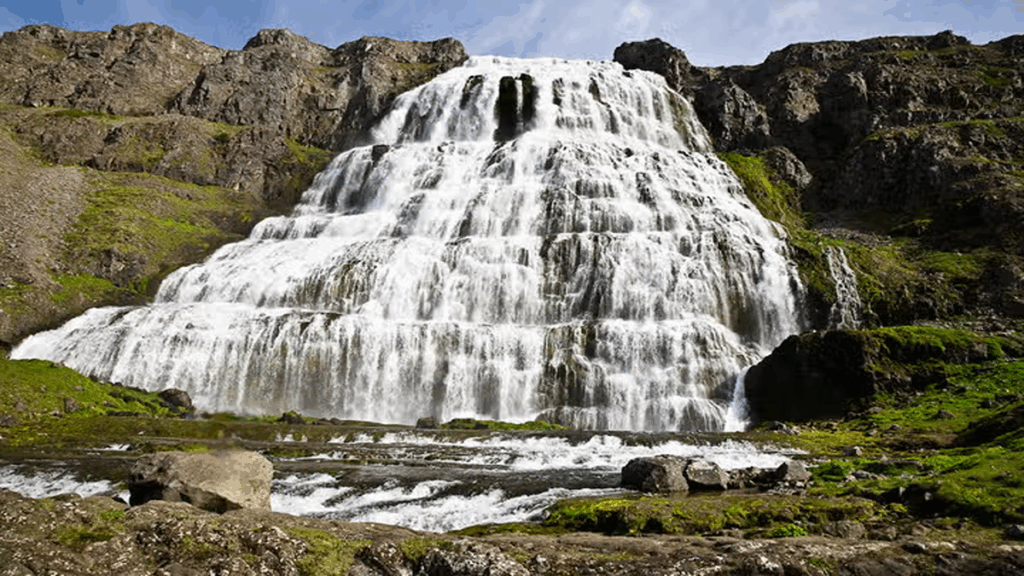
Strategic Destination Planning
Picking which places to visit in the Western fjords of Iceland requires smart priority choices based on weather windows, driving distances, and personal interests. The region’s three primary destinations – Dynjandi, Rauðisandur, and Látrabjarg – each demand different timing strategies and weather conditions for optimal experiences.
Attraction prioritisation depends on your trip length, interests, and seasonal timing. Single-day visitors must choose between maximum variety or focused exploration of fewer sites. Multi-day visitors can experience all major attractions whilst including smaller gems often missed by rushed itineraries.
Dynjandi Waterfall Complete Guide
Dynjandi creates Iceland’s most architecturally complex waterfall system through seven distinct cascades tumbling down a 100-meter cliff face. Each tier displays unique flow characteristics and pool formations that shift throughout seasonal changes. The ascending trail system positions you close enough to feel individual cascade spray whilst revealing new perspectives of the complete formation.
Waterfall system breakdown includes Dynjandifoss (the main fall), plus six smaller cascades: Hundafoss, Strokkur, Göngumannafoss, Hrísvaðsfoss, Strútur, and Bæjarfoss. Each offers distinct photographic opportunities and viewing angles for comprehensive documentation.
Photography strategy system maximises lighting and composition opportunities throughout the day. Morning approach from the eastern side provides dramatic side-lighting effects on the water columns. Late afternoon positioning from the western approach captures rainbow formations in the mist clouds created by the falls.
Photography timing breakdown
- Golden hour morning (6-8 AM): Eastern cliff illumination creates dramatic side-lighting
- Midday harsh light (11 AM-2 PM): Avoid for serious photography due to flat lighting
- Late afternoon magic (4-6 PM): Western angles capture rainbow formations in mist
- Evening blue hour (8-10 PM): Extended Arctic lighting provides unique atmosphere
- Overcast conditions: Actually enhance waterfall drama and eliminate harsh shadows
Visitor management becomes crucial during midday hours when tour bus arrivals concentrate crowds at the limited parking facility. Early morning exploration typically finds empty trails and unobstructed photography conditions perfect for serious documentation. Evening visits after 7 PM often provide similar solitude with extended Arctic lighting benefits.
Trail navigation requires approximately 45 minutes for the complete roundtrip hike, including stops at each cascade level. The marked path passes close enough to individual falls for dramatic photography whilst maintaining safety margins from slippery rock surfaces that become hazardous when wet.
Equipment recommendations for Dynjandi visits include waterproof camera gear, sturdy hiking boots with good grip, rain protection, and multiple layers for changing weather conditions. The spray zones near falls can damage electronics without proper protection.
Seasonal considerations affect waterfall volume and accessibility. Spring snowmelt creates maximum flow during May-June, whilst late summer provides more stable weather but reduced water volume. Winter access becomes impossible due to ice and snow accumulation.
Pro Tip: Visit during light rain conditions for enhanced waterfall volume and dramatic mist effects – many travellers avoid these conditions but miss the most spectacular displays and dramatic atmospheric effects.
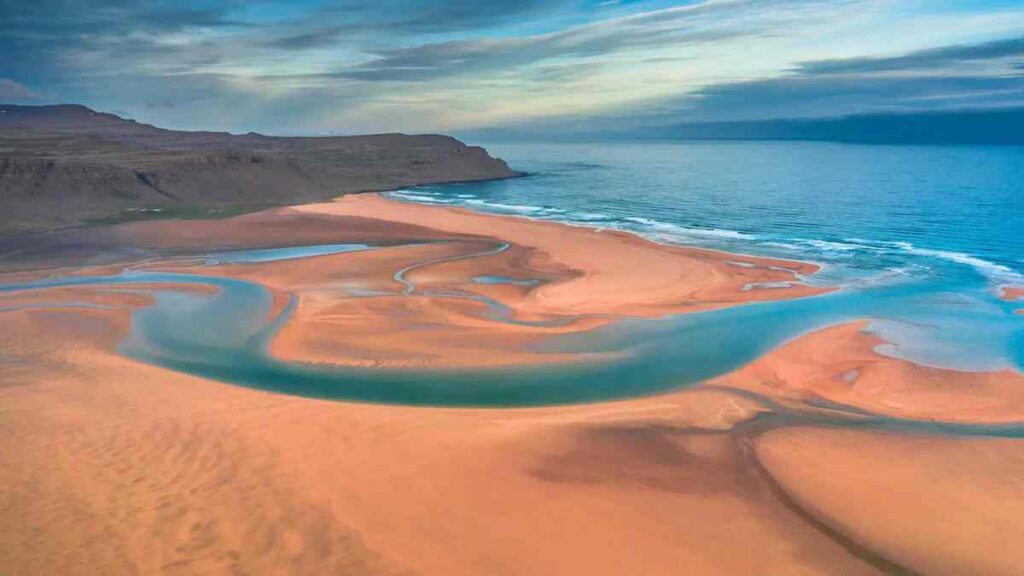
Rauðisandur Beach
Colour-shifting sand at Rauðisandur creates Iceland’s most unusual coastal phenomenon, transforming from golden yellow to deep orange throughout daily light cycles. Beach appearance shifts dramatically between overcast conditions and bright sunlight penetration through cloud cover. Tidal cycles reveal and conceal different mineral layers, producing subtle colour variations that change hourly.
Beach composition analysis reveals the unique mineral content creating the colour effects. Iron oxide deposits mixed with quartz and feldspar create the distinctive hues that shift with lighting conditions. The colour intensity depends on moisture content, light angle, and time of day.
Optimal viewing framework requires understanding local tide patterns and weather forecasting to maximise your experience at this unique location. During low tide, the widest expanse of sand is revealed, showcasing the most vibrant colors for photography.Clear skies enhance chromatic effects significantly, whilst overcast conditions severely mute the distinctive colour characteristics.
Tide timing strategy
- Low tide optimal: Maximum sand exposure and colour saturation
- High tide limitations: Reduced beach area and muted colours
- Incoming tide danger: Can trap visitors on outer sand areas
- Outgoing tide opportunity: Reveals new colour layers and textures
- Spring tides: Most dramatic colour variations but require careful timing
- Neap tides: Safer conditions but less dramatic colour effects
Weather impact assessment shows clear skies enhance colour effects dramatically, whilst overcast conditions significantly reduce the distinctive characteristics that make this beach famous. Western orientation creates ideal sunset lighting angles for photography, but requires timing coordination with tide schedules.
Access logistics involve a 25-minute drive from the main coastal road followed by a short walking approach to beach level. The gravel access track includes steep sections and sharp curves that challenge regular cars whilst testing driver skills on loose surfaces.
Parking arrangements accommodate approximately 15 vehicles in designated areas, though overflow options exist in adjacent grass zones during peak visitation periods. The remote location means services remain completely unavailable except for seasonal café operations that depend on weather and tourist numbers.
Hidden amenities near Rauðisandur include Franska Kaffi, a seasonal operation running from a converted shipping container. The menu emphasises Icelandic specialities including fresh waffles, locally sourced coffee, and light meals. Operating hours depend entirely on weather conditions and daily tourist demand, making advance planning impossible.
Photography equipment recommendations include polarising filters to enhance colour saturation, wide-angle lenses for beach panoramas, telephoto lenses for isolating colour patterns, and sturdy tripods for wind conditions. Protection from blowing sand becomes essential for equipment longevity.
Safety considerations include awareness of tide timing to avoid being cut off, protection from sudden weather changes, and understanding that rescue services remain extremely limited in this remote location. Mobile phone coverage is unreliable throughout the area.
Pro Tip: Time your visit for 2-3 hours before sunset during clear weather – this provides optimal lighting conditions whilst avoiding afternoon tour group concentrations and maximising colour intensity.
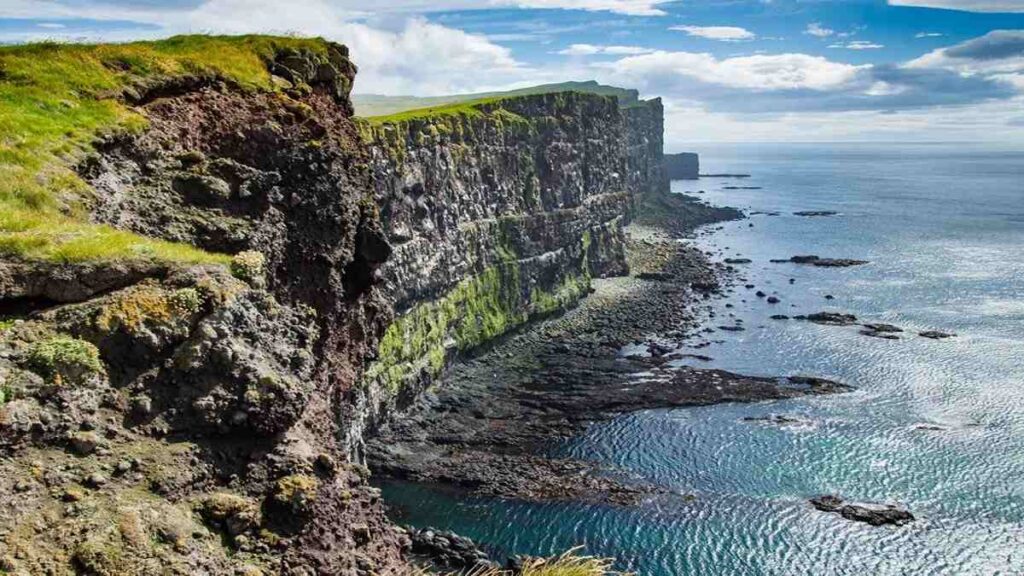
Látrabjarg Bird Cliff Guide
Cliff-nesting seabirds transform Látrabjarg into Europe’s most accessible puffin observation location during breeding season months. The 14-kilometre cliff system hosts approximately 40% of Iceland’s total puffin population across different viewing zones. Strategic positioning along clifftop trail sections maximises encounters with various bird species whilst maintaining safety margins.
Bird population breakdown includes millions of nesting seabirds representing multiple species. Puffins dominate the grass-covered clifftops, whilst guillemots, razorbills, and fulmars occupy the vertical cliff faces. Arctic terns monitor the coastal waters beneath, sometimes nesting in remote cliff regions.
Optimal bird watching framework focuses on understanding species behaviour patterns and seasonal timing for maximum wildlife encounters. Peak puffin season runs from mid-June through July when population density reaches maximum levels. Optimal timing targets early morning and late evening periods when birds return from ocean fishing expeditions.
Species behaviour patterns
- Puffins: Active early morning and evening, fishing at sea during midday
- Guillemots: Continuous cliff face activity throughout daylight hours
- Razorbills: Similar patterns to guillemots but prefer narrow ledges
- Fulmars: Soaring flight patterns throughout the day near cliff edges
- Arctic terns: Aggressive protection of nesting areas, dive-bombing intruders
- Seals: Occasional sightings along coastline below lighthouse area
An analysis of timing strategies shows that during midday, most birds are usually out at sea fishing, which means that the clifftop burrows are mostly empty for visitors. Weather patterns influence bird behaviour significantly, with calm conditions encouraging more surface activity and close approaches to human observers.
Safety protocols at Látrabjarg demand constant awareness of cliff-edge proximity and rapidly changing weather conditions. No protective barriers exist along the 400-metre-high precipice, whilst sudden wind gusts can destabilise unwary observers. Wet grass surfaces become extremely hazardous, particularly during morning dew periods and after precipitation.
Cliff safety framework
- Always keep a minimum distance of 3 meters from the edges of cliffs.
- Avoid areas where grass appears worn or unstable near edges
- Be on the lookout for unexpected wind gusts that might throw you off balance
- Choose suitable shoes that provide excellent traction for slippery grass surfaces.
- Never turn your back on cliff edges whilst photographing or observing
- Establish emergency contact procedures before venturing onto clifftops
Species identification opportunities extend far beyond puffins to include multiple seabird varieties that maintain distinct ecological niches. Each species maintains preferred nesting zones along the cliff system for optimal breeding success. Binoculars enhance viewing experiences significantly, though many birds approach within arm’s reach of patient observers.
Photography strategy for bird cliff visits requires understanding bird behaviour, lighting conditions, and safety requirements. Long telephoto lenses enable safe wildlife photography while keeping a safe distance from cliff edges. Fast shutter speeds capture bird flight, whilst wide-angle lenses document the dramatic cliff landscapes.
Equipment recommendations include weatherproof camera gear, sturdy tripod systems, telephoto lenses for wildlife photography, binoculars for bird identification, and appropriate clothing for wind protection. The combination of salt spray and strong winds can damage electronics without proper protection.
Seasonal timing considerations show bird activity peaks during June-July breeding season, whilst August begins the departure phase as young birds fledge. Outside breeding season, cliff visits offer scenic value but limited wildlife viewing opportunities that justify the long access drive.
Pro Tip: Bring windproof clothing and avoid approaching cliff edges during windy conditions – the combination of height and wind creates dangerous situations even for experienced hikers and wildlife observers.
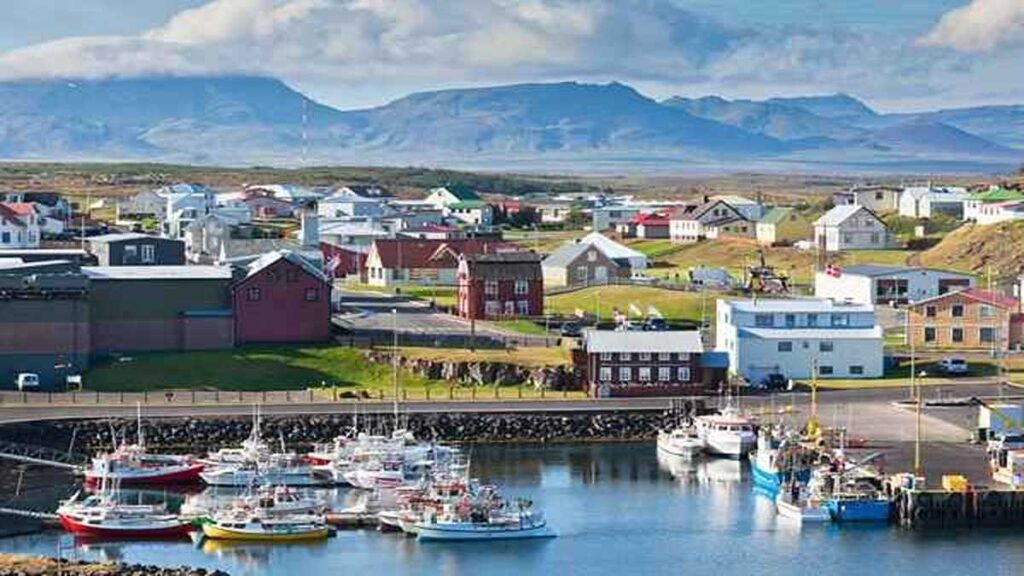
Planning Your Trip
Planning your Western fjords of Iceland trip requires balancing driving distances, weather dependencies, and seasonal constraints into workable daily schedules that actually function. Success depends on building flexibility into your planning framework whilst prioritising must-see attractions based on personal interests and available time windows.
Trip planning methodology differs significantly from other Iceland regions due to limited infrastructure, weather unpredictability, and substantial driving distances between attractions. Standard Iceland trip planning approaches fail here without modification for local conditions.
Single-Day System Architecture
Time-constrained visitors need ruthless prioritisation among competing attractions and significant inter-site driving distances. Dynjandi and Rauðisandur create the most logical pairing for maximum impact within limited timeframes, whilst Látrabjarg demands additional hours that strain single-day schedules severely.
Single-day framework implementation requires precise timing and realistic expectations about what you can accomplish. Ferry-based approaches provide the most efficient access but create rigid departure constraints that affect entire day planning.
Perfect single-day schedule
- 9:00 AM – Ferries leave from Stykkishólmur to Brjánslækur
- 12:00 PM – Arrive and disembark vehicle from ferry
- 12:30-1:00 PM – Drive to Dynjandi (40 minutes)
- 1:00-2:30 PM – Dynjandi waterfall exploration and photography
- 2:30-3:00 PM – Drive to Rauðisandur (30 minutes)
- 3:00-6:00 PM – Rauðisandur beach exploration and café visit
- 6:00-7:30 PM – Return drive to ferry terminal
- 8:30 PM – Ferry departure back to Stykkishólmur
Buffer time allocation accounts for photography stops, weather delays, and unexpected discoveries that commonly extend planned schedules. The framework prioritises Dynjandi as primary destination requiring approximately 90 minutes total including trail hiking and documentation time.
Alternative routing incorporating Látrabjarg works best during peak puffin season from mid-June through July for dedicated bird enthusiasts. This option requires earlier ferry departure and reduces time available for other attractions whilst adding nearly 2 hours of driving time to the itinerary.
Weather contingency planning becomes essential for single-day visits due to ferry schedule constraints. Bad weather can force activity cancellations without alternative indoor options, making flexibility crucial for salvaging productive visits.
Three-Day System Development
Extended programmes unlock comprehensive regional exploration whilst maintaining reasonable daily driving distances throughout your visit. This timeframe allows proper appreciation of major attractions without constant time pressure whilst providing flexibility for weather delays and spontaneous discoveries.
Three-day planning framework distributes attractions across multiple days to reduce rushing whilst building in weather contingency options. This approach allows deeper exploration of individual sites whilst maintaining overall itinerary flexibility.
Comprehensive three-day structure
- Day 1: Arrival logistics + Dynjandi exploration + accommodation settling + local area familiarisation
- Day 2: Rauðisandur + Látrabjarg wildlife photography focus + coastal drive exploration
- Day 3: Minor attractions + Garðar BA 64 shipwreck + Birkimelur Swimming Pool + departure preparation
Day-one objectives emphasise arrival logistics and initial attraction visits to maximise limited time effectively. Ferry passengers typically reach Brjánslækur during early afternoon hours, providing sufficient time for Dynjandi exploration before evening accommodation check-in and local area orientation.
Day-two programming targets Rauðisandur and Látrabjarg as primary destinations for wildlife and landscape photography sessions. Departing in the morning provides the best lighting at both sites while steering clear of the heavy crowds that tend to gather during the arrival times of tour buses.
Day-three activities accommodate smaller attractions, local exploration, and departure preparation without rushing through experiences. Garðar BA 64 shipwreck provides historical interest, whilst Birkimelur Swimming Pool offers relaxation before journey continuation.
Accommodation strategy for three-day visits should prioritise central locations in Patreksfjörður or Flókalundur that minimise daily driving distances to major attractions whilst providing access to services and dining options when available.
Week-Long Adventure Framework
Extended exploration programmes spanning five to seven days enable northern peninsula discovery including Ísafjörður town exploration and Hornstrandir Nature Reserve wilderness adventures. These comprehensive itineraries suit serious photographers, dedicated wildlife enthusiasts, and travellers seeking maximum cultural immersion within Iceland’s most isolated communities.
Week-long structure allows thorough exploration of both southern and northern Western fjords regions whilst building in multiple weather contingency days and opportunities for spontaneous discoveries that shorter visits cannot accommodate.
Advanced exploration framework
- Days 1-3: Southern peninsula attractions using established three-day system
- Days 4-5: Ísafjörður area exploration and Westman Sea boat tours
- Days 6-7: Hornstrandir wilderness hiking and Arctic fox photography expeditions
Northern areas require additional transport coordination and often boat access for remote locations that remain inaccessible by road. Hornstrandir specifically demands hiking preparation and wilderness camping equipment for multi-day exploration programmes that operate independently of standard accommodation infrastructure.
Advanced planning considerations include weather-dependent boat schedules, wilderness permit requirements, specialized equipment needs, and emergency communication procedures for areas without mobile phone coverage or rescue service access.
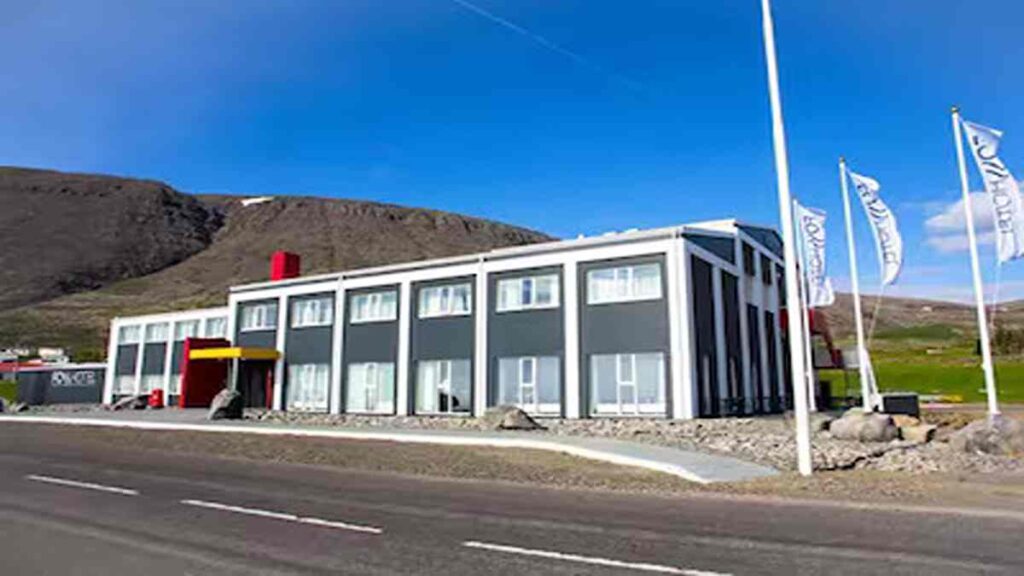
Accommodation Planning
Finding places to stay throughout the Western fjords of Iceland requires advance planning because options remain extremely limited compared to Iceland’s main tourist regions. Most facilities operate as small guesthouses or converted farmhouses rather than conventional hotels, creating unique opportunities for local cultural interaction whilst limiting choice and availability.
Accommodation scarcity reflects the region’s low population density and seasonal tourism patterns. Peak summer demand regularly exceeds available bed capacity, making advance reservations essential rather than optional for successful trip planning.
Accommodation Strategy Framework
Hotel Látrabjarg provides the region’s most remote lodging option, positioned within walking distance of the famous bird cliffs for dedicated wildlife enthusiasts. This property operates seasonally from May through September, closing entirely during harsh winter months when access becomes impossible due to snow and ice conditions.
Accommodation options breakdown by type, location, and suitability for different traveller needs and budget requirements:
Premium Accommodation Options
- Hotel Látrabjarg: A secluded spot, open seasonally, ideal for bird watching, with dining options available.
- Fosshotel Westfjords: Full hotel amenities, Patreksfjörður town centre, year-round operation
- Hotel Flókalundur: Junction location, restaurant facilities, tour group friendly
Mid-Range Accommodation Choices
- Móra Guesthouse: Budget-friendly option near Birkimelur hot springs, kitchen facilities
- Local guesthouses: Family-operated properties offering cultural insights and local knowledge
- Farm stays: Experience authentic local culture in agricultural settings, complete with delicious home-cooked meals.
Budget Accommodation Solutions
- Camping facilities: Basic amenities for budget travellers with weather protection needs
- Sleeping bag accommodation: Most economical option with shared facilities
- Youth hostel facilities: Limited availability but excellent value when available
Fosshotel Westfjords in Patreksfjörður represents the area’s largest conventional hotel property available to visitors seeking standard amenities. Standard features include private bathrooms, restaurant service, reliable heating systems, and Wi-Fi connectivity. The town location provides access to grocery stores, fuel stations, equipment shops, and other essential services.
Guesthouse alternatives typically feature shared bathroom facilities and kitchen access for self-catering throughout extended stays. Móra Guesthouse near Birkimelur exemplifies this accommodation style whilst providing proximity to natural hot spring facilities for evening relaxation after day-long exploration activities.
Booking strategy requires reservations 2-3 months in advance during peak summer months when demand regularly exceeds available bed capacity throughout the region. Last-minute availability becomes extremely rare during July and August, particularly on weekends when domestic tourists join international visitors seeking accommodation.
Seasonal pricing patterns show summer rates often doubling winter prices, whilst weekend premiums apply during peak months when demand exceeds available capacity. Understanding these patterns allows budget-conscious travellers to plan trips during shoulder seasons for significant cost savings.
Budget Accommodation Strategy
Camping infrastructure exists throughout the Western fjords of Iceland but operates with minimal facilities compared to organised campgrounds elsewhere in Iceland. Most sites provide basic toilet facilities and fresh water access, whilst shower availability remains inconsistent throughout the region and often requires payment.
Camping considerations include weather protection requirements due to frequent precipitation and strong winds that characterise the region’s climate patterns. Quality camping equipment becomes essential rather than optional for comfortable overnight stays in challenging conditions.
Self-catering accommodations with kitchen facilities offer significant cost advantages in a region where restaurant meals command premium pricing due to limited competition and supply chain challenges. Grocery shopping in Patreksfjörður or Ísafjörður before venturing to remote areas reduces food expenses whilst ensuring adequate supply security.
Sleeping bag accommodation provides the most economical lodging option at several guesthouses throughout the area. These arrangements supply beds and basic bedding whilst requiring guests to provide personal sleeping bags for warmth and hygiene purposes.
Cost-saving strategies for budget-conscious travellers include advance booking for discounts, shoulder season timing, group bookings for shared accommodation, and self-catering to reduce restaurant dependency in areas with limited dining options.
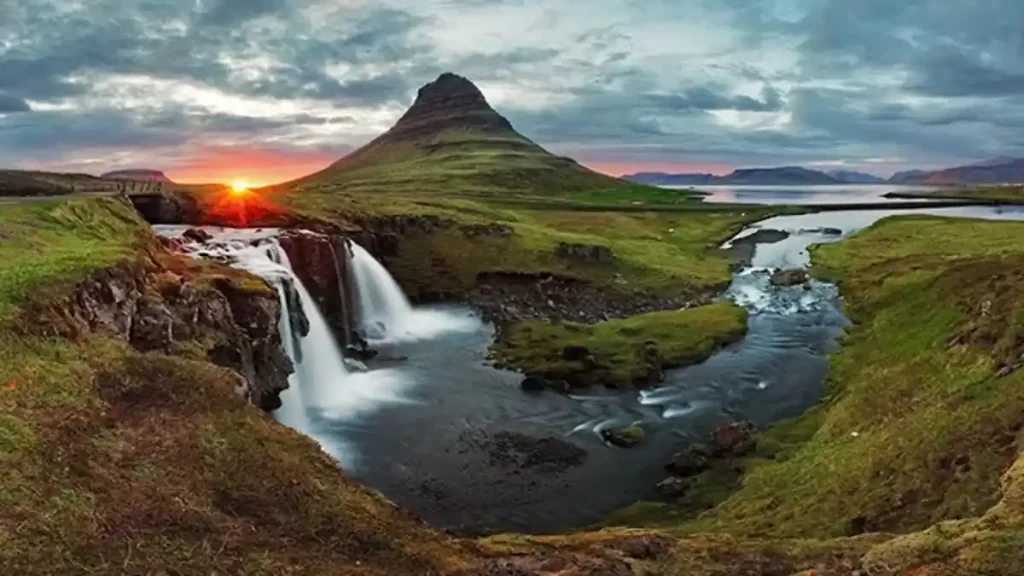
Weather Adaptation and Seasons
Seasonal planning for the Western fjords of Iceland extends beyond simple weather considerations to include accommodation availability, transportation schedules, and attraction accessibility windows that vary dramatically throughout the year. Each season demands different preparation strategies and equipment requirements for successful exploration.
Weather unpredictability characterises the region throughout all seasons, with conditions capable of changing from clear skies to severe storms within hours. This variability requires flexible planning and appropriate equipment for multiple weather scenarios during any visit.
Peak Season Framework (June-August)
July represents the optimal balance between weather reliability and service availability throughout the Western fjords region. August maintains excellent conditions with slightly reduced crowding, whilst June offers good value but includes higher precipitation risks that can disrupt outdoor activities and limit accessibility to remote areas.
Peak season characteristics that affect trip planning include most reliable weather patterns with minimal precipitation, full ferry schedule operations, maximum accommodation availability, peak tourist concentrations requiring advance planning, maximum daylight hours for extended exploration windows, and highest pricing across all service categories.
Summer weather patterns typically feature temperatures ranging from 8-15°C, with occasional spikes to 18°C during exceptional conditions. Precipitation remains possible throughout summer but occurs less frequently than shoulder seasons, whilst wind speeds average 15-25 mph with gusts potentially exceeding 50 mph.
Daylight hours during peak season extend from approximately 4 AM to 11 PM, providing nearly 19 hours of usable light for exploration activities. This extended daylight compensates for challenging weather conditions and allows flexible scheduling around precipitation and wind patterns.
Bird-watching seasons create specific travel windows for wildlife enthusiasts visiting the Western fjords region. Puffin colonies arrive during early June and depart by mid-August, with peak activity occurring during July breeding cycles when birds remain most accessible for observation and photography.
Peak season booking requirements demand advance reservations for accommodation, ferry transport, and vehicle rentals to ensure availability during high-demand periods. Prices reach annual maximums during July-August, making budget planning essential for cost-conscious travellers.
Shoulder Season Strategy (May, September)
Shoulder season opportunities in May and September provide significant cost savings and crowd avoidance at the expense of weather predictability and service reliability. Ferry schedules reduce to single daily sailings during these periods, whilst some accommodations close entirely for seasonal maintenance and staff holidays.
May conditions feature increasing daylight hours, moderate temperatures averaging 5-12°C, and higher precipitation frequency that can impact outdoor activities. Snow remains possible at higher elevations, whilst road conditions generally remain acceptable for properly equipped vehicles.
September weather patterns show decreasing daylight hours, temperatures ranging from 6-13°C, and increased storm frequency as winter weather patterns begin establishing. Road conditions remain generally acceptable, though snow becomes possible at higher elevations during late September periods.
Shoulder season benefits include reduced accommodation pricing with easier availability, minimal tourist crowds at major attractions, lower transportation costs and flexible scheduling, authentic local experiences without tourist influence, and weather windows that remain adequate for major activities despite increased unpredictability.
Service limitations during shoulder seasons include reduced ferry schedules, limited accommodation options with some properties closed, restricted restaurant hours and menu options, reduced tour availability and activity options, and limited emergency services accessibility in remote areas.
Risk factors for shoulder season travel include weather unpredictability that can force itinerary changes, reduced daylight hours limiting exploration time, limited backup options if plans change, and increased difficulty accessing emergency services in remote locations.
Winter Exploration Framework
Winter travel to the Western fjords of Iceland requires specialised equipment, extensive local knowledge, and flexible scheduling to accommodate severe weather events that can last for days. Many attractions become completely unreachable due to snow accumulation and reduced daylight hours that limit outdoor activities to brief windows.
Winter conditions feature temperatures often below freezing, frequent snow and ice accumulation, winds exceeding 60 mph during storms, and daylight hours reduced to 4-6 hours during December-January. These conditions make exploration extremely challenging and potentially dangerous without proper preparation.
Winter considerations that affect trip planning include specialised cold weather equipment and emergency supplies, dramatically reduced daylight hours limiting exploration windows, frequent road closures and transportation service reductions, severely limited accommodation and restaurant operations, and Northern Lights viewing opportunities during clear evenings when weather permits.
Equipment requirements for winter visits include insulated clothing systems, emergency shelter and heating, communication devices for emergency contact, specialized vehicle equipment including chains and emergency supplies, and navigation tools for conditions with limited visibility.
Northern Lights viewing opportunities exist during winter months when darkness returns to the region, though cloud cover and weather conditions often limit visibility. Clear evenings provide excellent aurora viewing due to minimal light pollution in this remote region.
Winter accessibility shows most attractions become unreachable, ferry services operate on reduced schedules with frequent weather cancellations, accommodation options drop to minimal levels with many properties closed, and emergency services become extremely limited throughout remote areas.
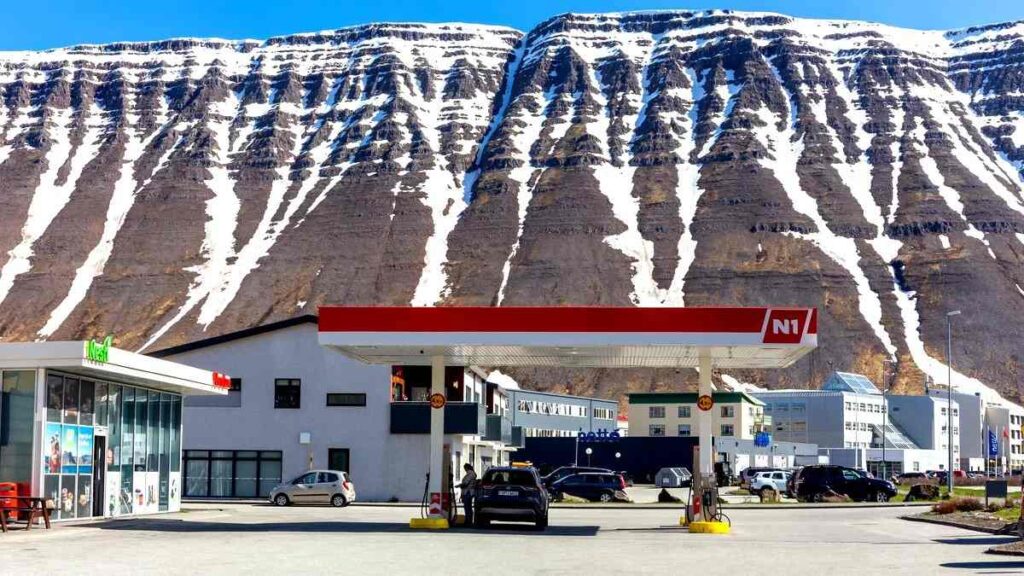
Budgeting Strategy
Transportation expenses typically consume 40-50% of total Western fjords travel budgets through ferry fees, fuel costs, and vehicle rental charges. Understanding these cost structures allows strategic planning that maximises value whilst minimising unnecessary expenses throughout your journey.
Budget allocation framework helps travellers understand typical expense distributions and plan accordingly for realistic trip costs that account for the region’s premium pricing across most service categories.
Transportation Cost Framework
Ferry costs represent fixed expenses that increase significantly during peak season periods, whilst fuel expenses throughout the region command substantial premiums above Reykjavík pricing due to remote location logistics and limited supply infrastructure. Vehicle rental insurance specifically covering gravel roads adds considerable daily fees to standard rates.
Ferry prices change depending on the season, the size of the vehicle, and the type of passenger. Summer rates often double winter prices, whilst advance booking sometimes provides modest discounts for early reservations. Round-trip bookings may offer slight savings compared to separate one-way purchases.
Fuel cost analysis shows regional pricing typically exceeds Reykjavík levels by 15-25% due to transportation costs and limited competition among suppliers. Remote stations may charge even higher premiums, making fuel planning and budgeting essential for cost control.
Vehicle rental costs include base daily rates, comprehensive insurance requirements, equipment fees for items like GPS units and emergency gear, and potential damage deposits that may be held for gravel road coverage. Premium pricing during peak season can double winter rates.
Insurance requirements for Western fjords driving include comprehensive coverage for gravel road damage, stone impact protection, undercarriage damage coverage, and emergency rescue service protection. These additions significantly increase daily costs but prevent potentially expensive repair bills.
Accommodation Cost Strategy
Accommodation pricing reflects limited supply and seasonal demand fluctuations throughout the Western fjords region. Summer rates often double winter pricing levels, whilst weekend premiums apply during peak months when demand exceeds available capacity significantly.
Pricing tiers vary dramatically by accommodation type and location. Premium hotels command highest rates, mid-range guesthouses offer moderate pricing, budget options including camping provide lowest costs, and seasonal variations affect all categories substantially.
Booking timing strategies can reduce accommodation costs by 15-25% compared to last-minute reservations during peak season periods. Early ferry reservations sometimes include promotional rates or package deals combining transportation and lodging for additional savings opportunities.
Cost control techniques include advance booking for discounts, shoulder season timing for lower rates, group bookings for shared accommodation costs, self-catering to reduce restaurant dependency, and camping for budget-conscious travellers willing to sacrifice comfort for savings.
Food and Supply Cost Management
Food costs require strategic shopping and meal planning due to limited restaurant options and premium grocery pricing throughout the region. Patreksfjörður supermarket rates exceed Reykjavík levels by approximately 20-30%, whilst remote locations command even higher premiums for basic supplies.
Restaurant pricing in the Western fjords reflects limited competition and high operating costs. Meals typically cost 25-40% more than Reykjavík prices, with limited menu options and seasonal availability affecting both choice and pricing.
Supply procurement strategy involves shopping in Reykjavík or larger towns before entering the region to eliminate premium pricing for essential supplies and equipment. Fuel purchases, grocery shopping, and equipment acquisition should occur in populated areas rather than remote settlements where options remain severely limited.
Self-catering strategies provide the most effective cost control approach available throughout the region. Kitchen-equipped accommodations eliminate restaurant dependency whilst allowing meal preparation using groceries purchased at lower urban prices before regional entry.
Money-Saving Implementation System
Advance booking strategies can reduce overall trip costs significantly through accommodation discounts, ferry promotional rates, and package deals combining multiple services. Planning 2-3 months ahead provides access to best pricing whilst ensuring availability during peak periods.
Seasonal timing considerations show shoulder season travel provides the most dramatic savings potential across all expense categories whilst maintaining acceptable weather conditions for major activities. May and September offer substantial discounts on accommodations, transportation, and services whilst avoiding peak season crowds.
Group travel economics improve significantly for parties of 3-4 people sharing accommodation and transportation costs effectively. Rental vehicle expenses remain constant regardless of passenger count, whilst guesthouse rates often include multiple-bed arrangements that reduce per-person costs substantially.
Supply strategy involves purchasing fuel, groceries, and equipment in populated areas before entering remote regions where pricing premiums and limited availability create significant cost increases. Bulk purchasing of non-perishable items provides additional savings for extended visits.
Cost tracking throughout the trip helps identify spending patterns and areas for future savings whilst ensuring budget adherence during the current visit. Many travellers underestimate regional premium pricing and exceed planned budgets without careful monitoring.
Pro Tip: Plan your grocery shopping and fuel purchases strategically in larger towns before venturing into remote areas – this single strategy can reduce your total trip costs by 20-30% whilst ensuring adequate supplies for safe exploration.

